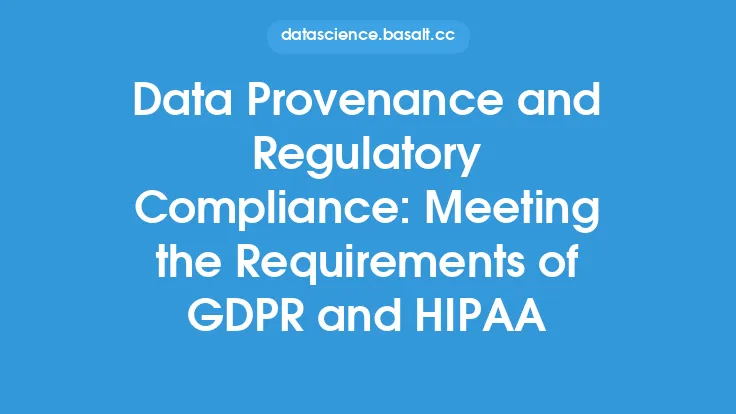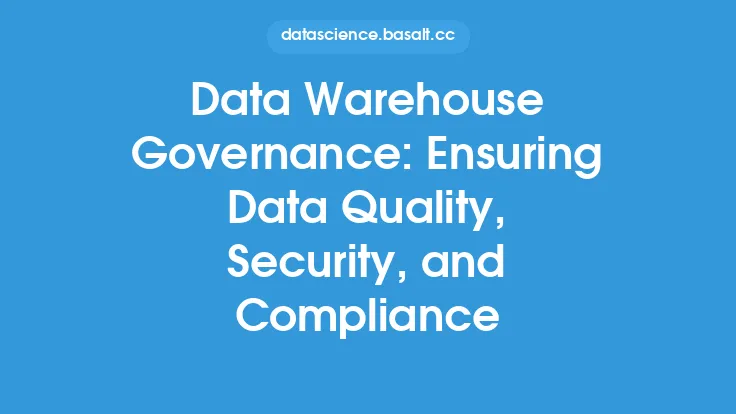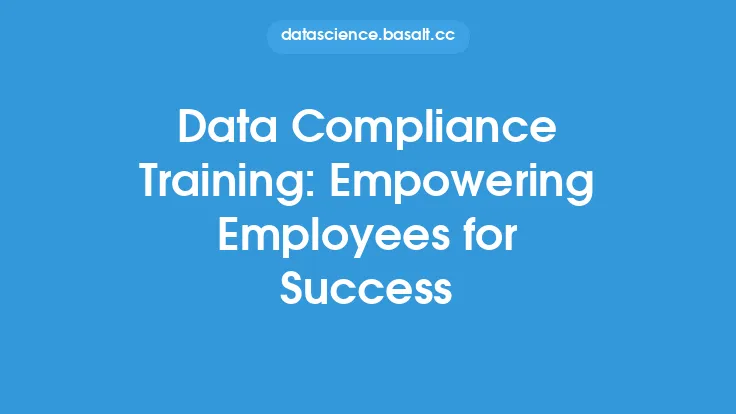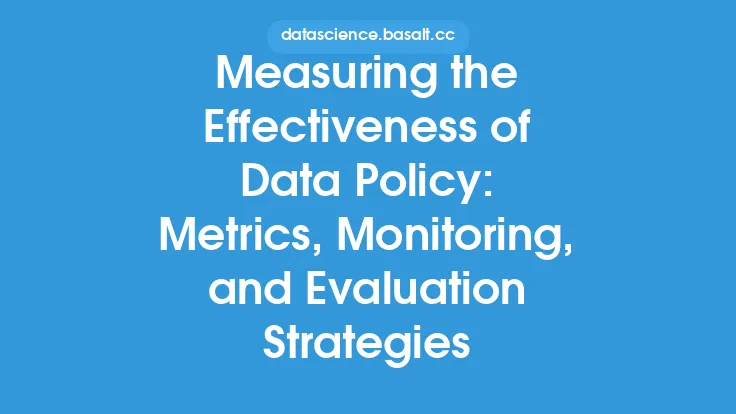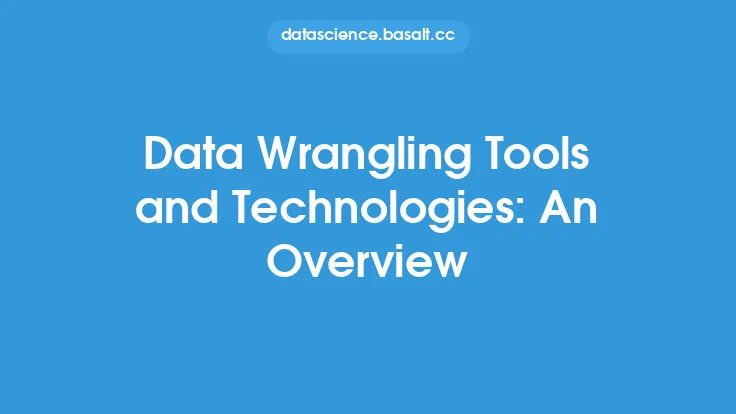In today's digital age, organizations handle vast amounts of data, including sensitive information about their customers, employees, and business operations. As a result, data compliance has become a critical aspect of data governance, ensuring that companies adhere to relevant laws, regulations, and standards when collecting, storing, and processing data. Data compliance is not just about avoiding fines and penalties; it's also about maintaining public trust, protecting brand reputation, and ensuring the integrity of business operations.
Introduction to Regulatory Requirements
Regulatory requirements for data compliance vary by jurisdiction, industry, and type of data. Some of the key regulations and standards that organizations must comply with include the General Data Protection Regulation (GDPR) in the European Union, the California Consumer Privacy Act (CCPA) in the United States, the Payment Card Industry Data Security Standard (PCI DSS) for payment card information, and the Health Insurance Portability and Accountability Act (HIPAA) for healthcare data. These regulations often require organizations to implement specific data protection measures, such as data encryption, access controls, and incident response plans.
Data Protection Principles
At the heart of data compliance are several key data protection principles that organizations must follow. These principles include data minimization, which requires companies to collect and process only the minimum amount of data necessary to achieve their purposes; data accuracy, which ensures that data is accurate and up-to-date; and data retention, which limits the amount of time that data can be stored. Additionally, organizations must ensure that data is processed fairly and lawfully, with transparency and accountability. These principles are often reflected in regulatory requirements and industry standards, and organizations must implement policies and procedures to ensure that they are followed.
Data Subject Rights
Data subjects, or individuals whose data is being collected and processed, have certain rights under data protection regulations. These rights include the right to access their data, the right to rectify inaccurate data, and the right to erase their data (also known as the "right to be forgotten"). Data subjects also have the right to restrict processing, object to processing, and data portability. Organizations must have processes in place to respond to data subject requests and ensure that these rights are respected.
Data Breach Notification
In the event of a data breach, organizations have a responsibility to notify affected data subjects and regulatory authorities. Data breach notification requirements vary by jurisdiction, but most regulations require organizations to notify data subjects without undue delay, typically within 72 hours of becoming aware of the breach. Organizations must also provide certain information about the breach, such as the nature of the breach, the categories of data affected, and the measures being taken to mitigate the breach.
Technical and Organizational Measures
To ensure data compliance, organizations must implement technical and organizational measures to protect data. These measures include data encryption, firewalls, access controls, and intrusion detection systems. Organizations must also implement policies and procedures for data handling, such as data classification, data backup and recovery, and incident response. Additionally, organizations must ensure that their employees are trained on data protection principles and procedures, and that third-party vendors and service providers are also compliant with relevant regulations.
Accountability and Governance
Data compliance requires a culture of accountability and governance within an organization. This includes assigning responsibility for data protection to a specific individual or team, such as a data protection officer (DPO). Organizations must also establish policies and procedures for data protection, and ensure that these policies are communicated to all employees. Regular audits and risk assessments must be conducted to identify and mitigate data protection risks, and organizations must be prepared to respond to data breaches and other incidents.
International Data Transfers
With the increasing globalization of business, international data transfers have become more common. However, transferring data across borders can be complex, as different countries have different data protection regulations. Organizations must ensure that they comply with relevant regulations, such as the GDPR, when transferring data outside of the European Union. This may involve using standard contractual clauses, binding corporate rules, or other mechanisms to ensure that data is protected.
Emerging Trends and Technologies
Emerging trends and technologies, such as artificial intelligence, blockchain, and the Internet of Things (IoT), are changing the data compliance landscape. These technologies often involve the collection and processing of large amounts of data, which must be protected in accordance with relevant regulations. Organizations must stay up-to-date with the latest developments and ensure that their data compliance programs are adapted to address these new challenges.
Conclusion
Data compliance is a critical aspect of data governance, requiring organizations to adhere to relevant laws, regulations, and standards when collecting, storing, and processing data. By understanding regulatory requirements, data protection principles, and technical and organizational measures, organizations can ensure that they are compliant with relevant regulations and maintain public trust. As data compliance continues to evolve, organizations must stay informed about emerging trends and technologies, and adapt their compliance programs to address new challenges and risks.
